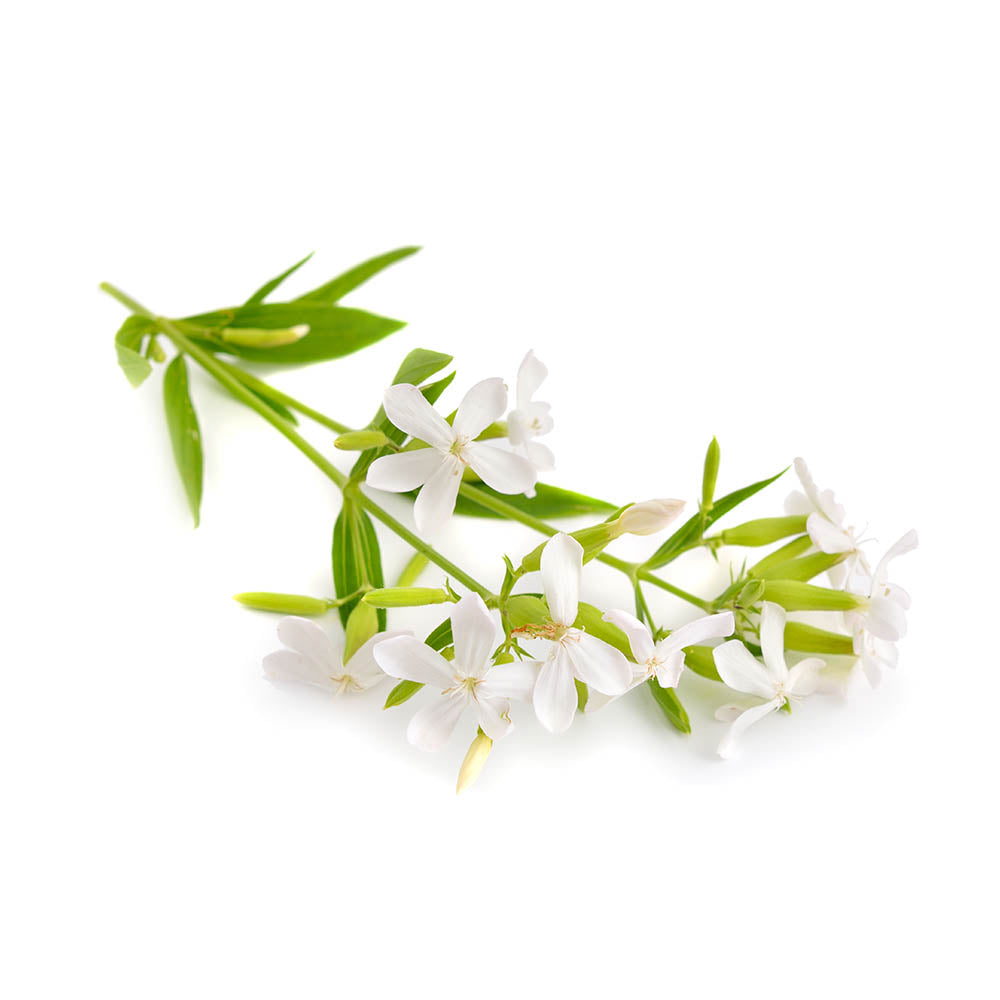Soapwort (Saponaria officinalis) Dried Root Herb

Other Names: Soaproot, Bouncing Bet, Latherwort, Fuller’s Herb, Bruisewort, Crow Soap, Sweet Betty
The soapwort’s root contains saponins (up to 5%), flavonoids, sugars, resin, vitamin C and small amounts of essential oil.
Properties:
It can be used as an alterative, antiscrophulatic, cholagogue, depurative, mildly diuretic, expectorant, purgative and tonic. In the Middle Ages, soapwort was used to relieve chest pain and as an herbal remedy for syphilis and tinnitus.
In herbal medicine, soapwort is mainly used as a remedy for a cough, bronchitis, and inflammation of the upper respiratory tract, usually in the form of a decoction.
Due to the herb’s irritating effect on the mucous membranes of the digestive tract, it stimulates the fluid secretion of the bronchi.
Soapwort enhances the production and excretion of bile from the liver and gallbladder and it has been used as a natural treatment for constipation and bile duct diseases.
Soapwort root is extremely rich in saponins - foaming substances with delicate cleansing and antiseptic properties. Thanks to them, soapwort root is a perfect hypoallergenic treatment for hair and scalp care, it is also suitable for washing the face and the whole body.
Soapworth gives the hair a healthy appearance, increases their volume and reduces oilyness. It helps to rebuild hair damaged by chemical care treatments. Nourishes and regenerates the scalp, and supports the fight against dandruff.
A natural soap can be made by boiling the dried and crushed root for half an hour in water. The saponins present in the plant lower the surface tension of the water resulting in a foamy, soapy solution which can be used for cleaning. This solution is gentle and effective cleaner that was often used by museums to clean fragile and delicate fabrics that could not withstand the strong chemical soaps.
Preparation and dosage:
For internal use:
One teaspoon mix with the glass of boiling water and leave under a cover for approx. 10-15 minutes until it infuses. Drink 1-2 times a day.
Soapwort should never be consumed in a large dosage or over a long period of time because the saponin content of the herb can cause hemolysis, and severe irritation of the digestive tract resulting in cramps, nausea, vomiting, and diarrhea.
For external use:
Cosmetic decoction: 2 tablespoons roots pour 2 cups of water, bring to a boil and cook for 5-10 minutes on low heat. Strain it and cool it. Use for rinsing washed hair and scalp, for washing the face and body or as a face tonic.
Ingredients: 100% Saponaria officinalis from organique plantations
Country of Origin: Poland
This information is not intended to diagnose, treat, cure, or prevent any disease.
Not intended for use by pregnant or nursing women. If you have a medical condition or are taking medication, consult your doctor prior to use.






